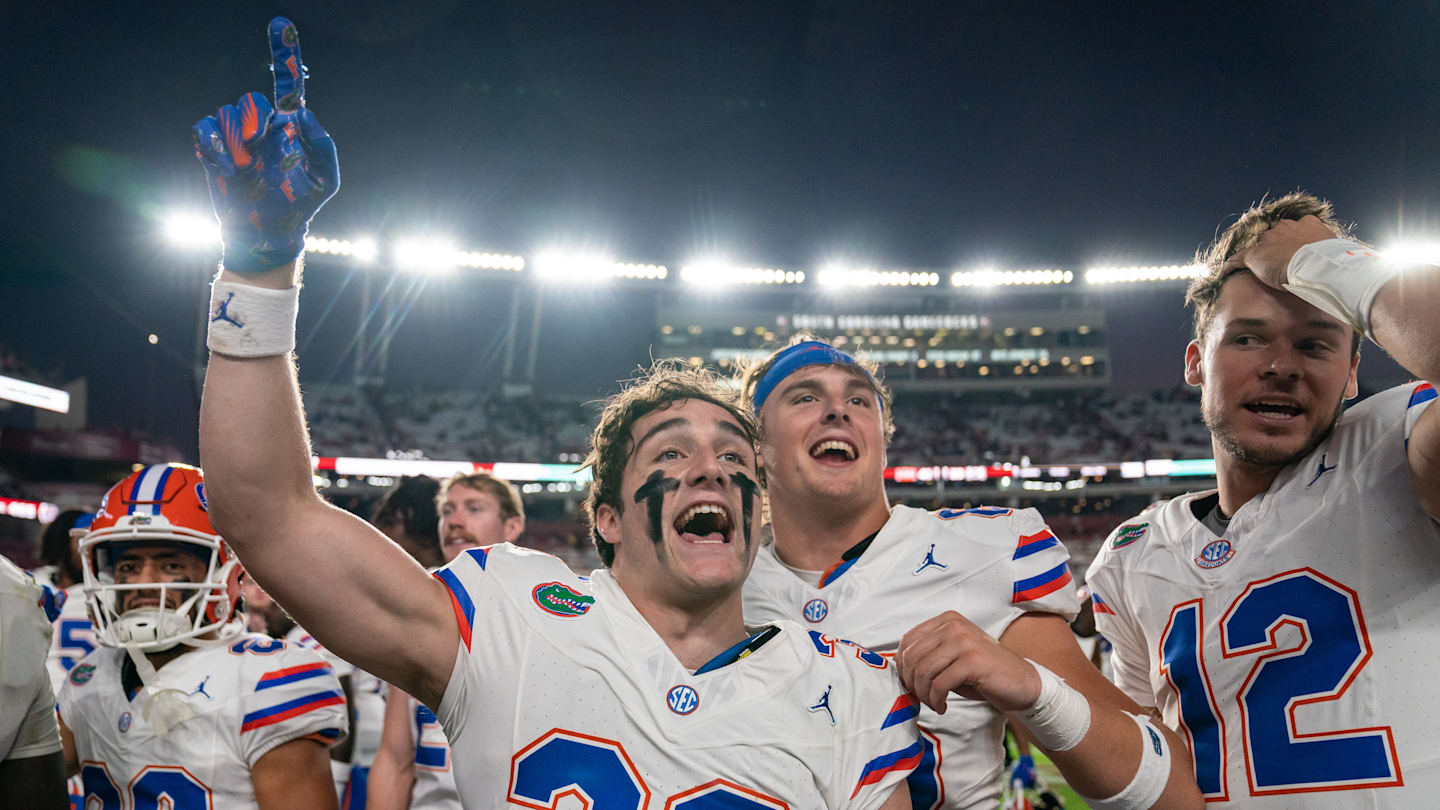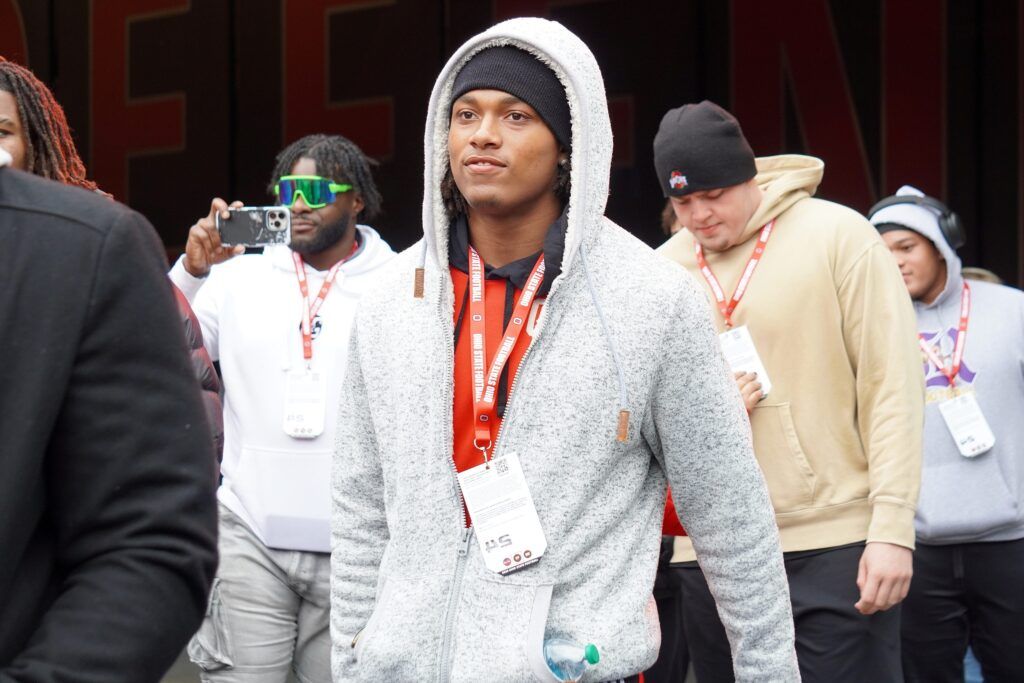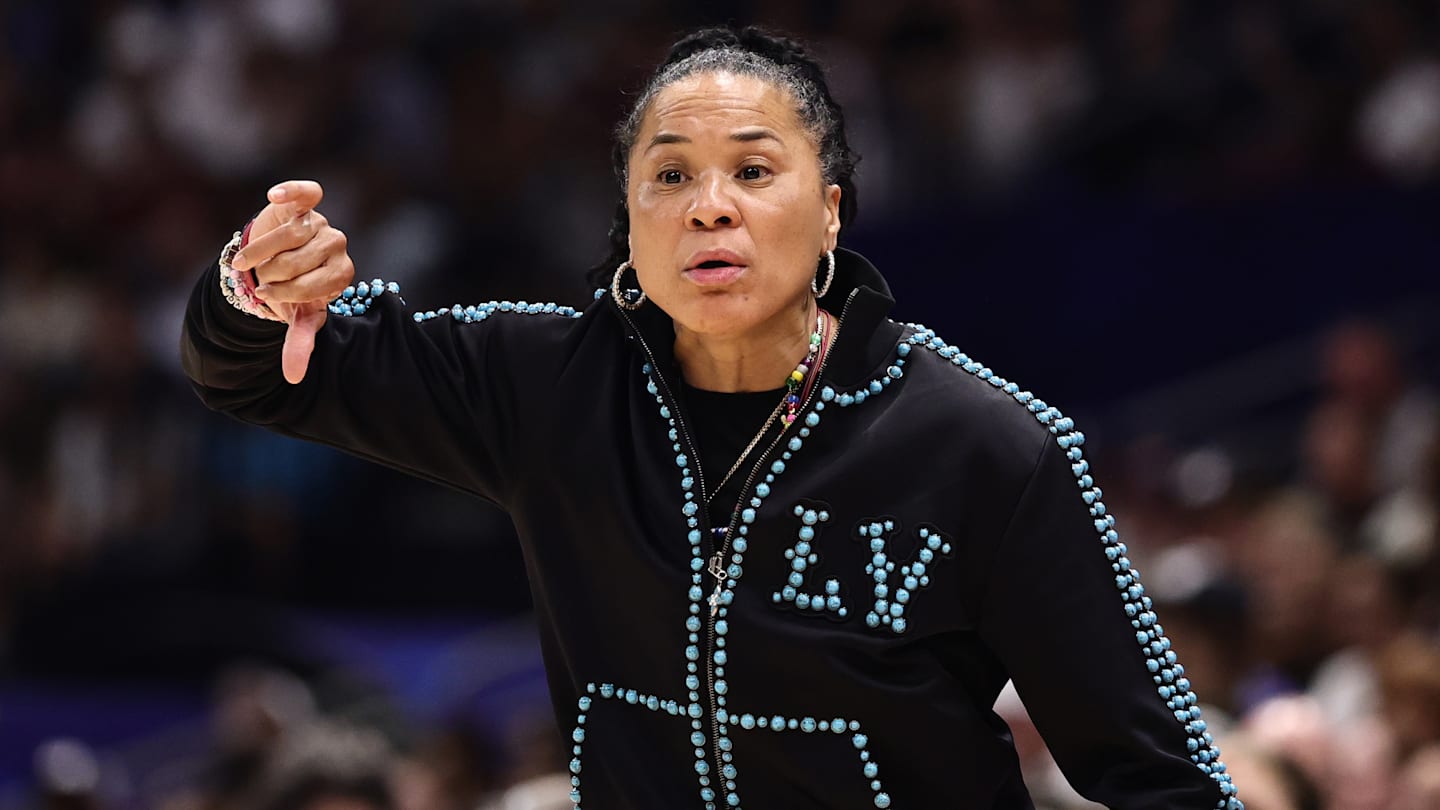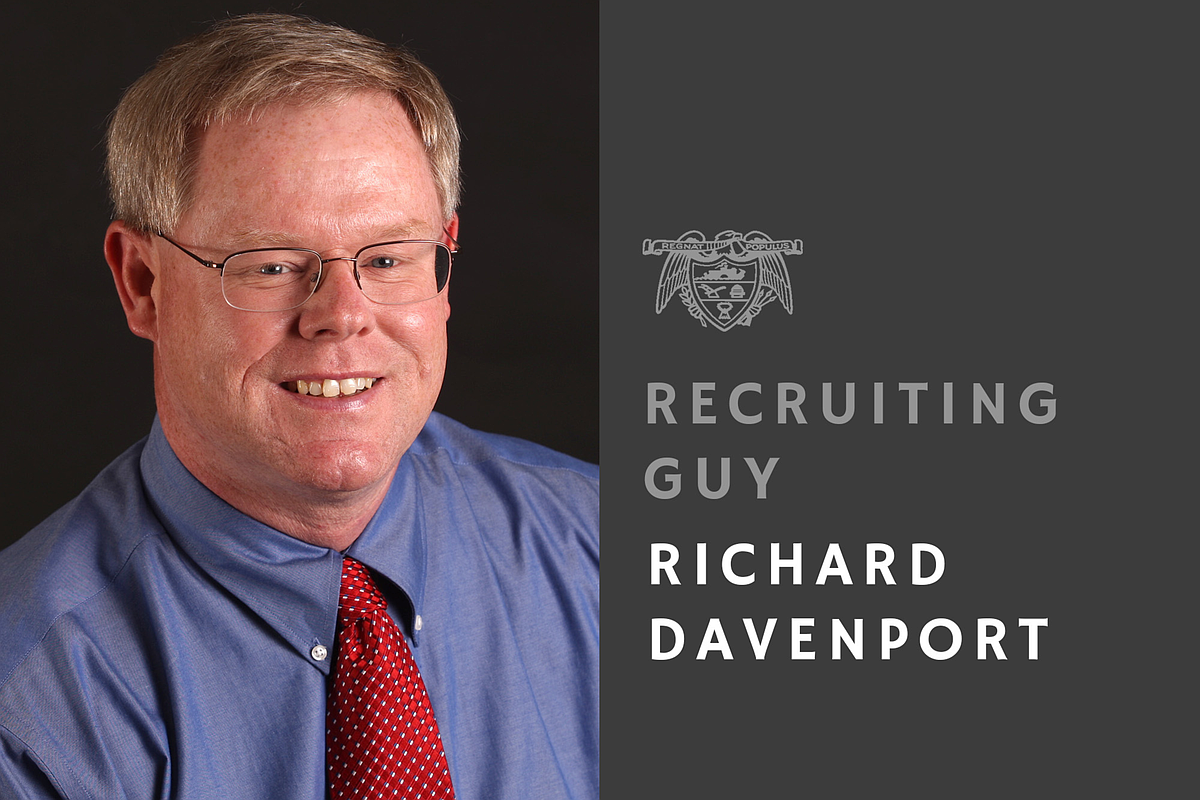NIL
Ranking Michigan Basketball’s best additions during transfer portal era
The transfer portal as a database was launched in Oct. 2018. Despite a slow start, the portal now rules the college world when it comes to roster management. Since its inception, Michigan has taken in 19 transfers. Today we’re going to take a stab at ranking each of them. 19. Brandon Wade (Duquesne) Wade was […]

The transfer portal as a database was launched in Oct. 2018. Despite a slow start, the portal now rules the college world when it comes to roster management. Since its inception, Michigan has taken in 19 transfers.
Today we’re going to take a stab at ranking each of them.
19. Brandon Wade (Duquesne)
Wade was just the second player to transfer to Michigan via the transfer portal and was simply a part of the bench mob.
18. Jaron Faulds (Columbia)
Faulds, also a part of the bench mob for a few years, was a Michigan native who opted for a Michigan degree rather than an Ivy League degree. His impact on the court was minimal.
17. Tray Jackson (Seton Hall)
The first transfer on our list who came to Ann Arbor with a legitimate shot at playing time, Jackson was a bit of a disappointment in his one year at Michigan. He appeared in 28 games but scored just five points per game.
16. Sam Walters (Alabama)
Fans had high hopes for Walters as a lethal sharpshooter, but injuries prevented him from playing much in his one year at Michigan.
15. Jaelin Llewellyn (Princeton)
Like Walters, Michigan was hoping to rely on him before an injury shut him down for the year. In Llewellyn’s case, it was an ACL tear. However, even prior to the injury, he had been slightly disappointing as an up-transfer from the Ivy League.
14. Aday Mara (UCLA)
Here’s where the list starts to get complicated. Mara has yet to suit up for the Wolverines, but the 7-foot-3 big man should play a big part in the rotation next year. Mara could be much higher on this list by season’s end.
13. DeVante’ Jones (Coastal Carolina)
Jones got off to a rough start in a disappointing 2021-22 season. However, he picked up steam as the season went on, including a memorable performance against Ohio State. He was certainly a serviceable Big Ten point guard.
12. Rubin Jones (North Texas)
Jones played just one year in Ann Arbor. While not a stat stuffer by any means, he was a defensive pest who made key plays at key times. I’ll always remember him for his put-back slam at home in the upset win over Purdue.
11. Morez Johnson (Illinois)
Like Mara, it’s tough to project what this year’s incoming transfers will look like without seeing them in action just yet. However, Johnson is expected to be the starting center this year and should play a crucial role moving forward.
10. Roddy Gayle Jr. (Ohio State)
Year 1 at Michigan was full of ups and downs. His three-point shooting wasn’t stellar, but his superb free-throw shooting came up clutch. Gayle should be a major contributor to the 2025-26 team.
9. Elliot Cadeau (North Carolina)
Cadeau is an excellent playmaker and distributor who needs to get better at not turning the ball over. With Michigan projected to be a top-five team in the country this year, it’s hard not to include their presumed starting point guard in the top-10 incoming transfer rankings.
8. Olivier Nkamhoua (Tennessee)
Nkamhoua tends to get overlooked because of how poorly his lone season in Ann Arbor went for the team. However, the team’s failure was hardly his fault. He played 33.4 minutes per game and had 14.8 points and 7.1 rebounds per game. He also battled a few nagging injuries. I firmly believe had the team around him been better, Nkamhoua would be remembered much more fondly.
7. Nimari Burnett (Alabama)
Burnett never quite lived up to his five-star recruiting profile, but that doesn’t make him a bad player by any means. He has been an excellent three-and-D defender at Michigan, and he will be one of the leaders of the team once again this season.
6. Mike Smith (Columbia)
The 2020 transfer portal haul of Mike Smith and Chaundee Brown was the first true taste of the portal for Michigan fans. Despite being undersized, Smith was lightning-quick in the backcourt. In his lone season at Michigan, he averaged nine points, 5.3 assists and 2.8 rebounds per game. While not the most talented player to ever transfer in, his impact was unparalleled, as he led Michigan to a Big Ten championship and an Elite Eight appearance.
5. Chaundee Brown (Wake Forest)
Like Smith, Brown may not have been the most talented transfer portal addition for the Wolverines, but his skillset was exactly what they needed. Brown averaged eight points, 3.1 rebounds and 0.6 assists per game off the bench. He was a wing who was not ball-dominant, which helped space the floor when the Wolverines desperately needed it.
4. Tre Donaldson (Auburn)
Admittedly, Donaldson was the player I had the toughest time placing on this list. He had an up and down season, but it ended emphatically on an up. He poured in 11.3 points, 4.1 assists and 3.5 rebounds per game last season, and was the catalyst to a Michigan offense that lacked playmaking at times. His game-winner against Maryland in the Big Ten Tournament will likely live in Michigan lore for some time.
3. Vlad Goldin (Florida Atlantic)
Goldin came to Michigan as a fairly polished big man. His back-to-the-basket game and touch around the basket were exquisite. At Michigan, he dominated throughout most of a grueling Big Ten schedule and helped the Wolverines make the Sweet Sixteen. He averaged 16.6 points, seven rebounds, 1.4 blocks and 1.1 assists per game.
2. Danny Wolf (Yale)
Goldin’s counterpart in Area 50-1 slots in just higher than him. In his one season in Ann Arbor, Wolf tallied 13.2 points, 9.7 rebounds, 3.6 assists and 1.4 blocks per game. His ball-handling ability at 7-foot was second to none in college basketball. He will likely be drafted as high as the late lottery in the upcoming NBA Draft.
1. Yaxel Lendeborg (UAB)
Lendeborg has to be No. 1 on this list, as he was the top rated player in the portal this offseason. Having fended off the NBA for his services, Michigan will likely rely heavily on his talent across the board. He averaged a double-double at UAB last year with 17.7 points and 11.4 rebounds per game. He is also the type of player who should have no trouble up-transferring due to his physical brand of basketball.
NIL
NIL confusion raises alarms and concerns among Florida football alumni
Big-time college football has become a Wild West situation, marked by new rules for name, image, and likeness (NIL), where players now receive salaries from schools, and the transfer portal, which enables student-athletes to move from one school to another from year to year. This new anything-goes-era of major college football has former University of […]

Big-time college football has become a Wild West situation, marked by new rules for name, image, and likeness (NIL), where players now receive salaries from schools, and the transfer portal, which enables student-athletes to move from one school to another from year to year.
This new anything-goes-era of major college football has former University of Florida gridiron players a bit concerned about the state of the game and lost loyalty to one team. The NCAA’s power programs now resemble pro teams. Some even describe it as NFL Jr.
“NFL Jr.? No.” said Jon Xynidis, who played safety and special teams for the Gators from 1994-97. “I think it’s the NFL with no rules. No salary cap, trade rules, nothing.”
Former Florida Gators express views on NIL
Beginning this season, athletic programs will be allowed to share revenue directly with their athletes. Based on a court-ordered mandate, every school will be allowed a cap of $20.5 million in direct payments to athletes in the first year, increasing by 4 percent every season for the next 10 years.
Former UCLA basketball player Ed O’Bannon is widely considered the Father of NIL. He fronted a lawsuit in 2015 that eventually led to players taking control of their NIL, which opened the door for athletes to lend their name to products and services for profit.
It’s a far cry from John Schnebly’s college experience. Schnebly was the Gators backup quarterback and placeholder under head coaches Ray Graves (1968-69) and Doug Dickey (1970-71).
“When I played, I got what I bargained for,” said the 75-year-old Gator pigskin alum. “I got a good education. They fed me and took care of me. Whether I needed new shoes or to fix a broken leg, the Gators took care of it.”
“Am I jealous of these guys? I don’t know,” he added. “I guess maybe a little bit. To me it seems like these rules make it very difficult to coach because you don’t know what players you’re going to have from year to year.
“These days they can leave and go play someplace else if they want. Maybe they get a little better offer, and they are gone. So, there’s no loyalty. It’s all about what each individual gets. It’s definitely different.”
John Schnebly played quarterback and was placeholder for the Gators from 1968-71. pic.twitter.com/PmkQ9WbvV5
— #GodwinKelly (@godwinkelly) June 27, 2025
Xynidis, 49, played for legendary Head Coach Steve Spurrier, who advocated for player pay in the 1990s. The Gators won the SEC Championship each year Xynidis was on the team. UF captured the NCAA National Championship in 1996. No big money was being tossed around in those days.
“We struggled in college,” he said. “We got a stipend for food and for rent. You had to have a side job to get out to dinner or go on a date or whatever it was. It wasn’t easy living but it was part of the experience so I appreciated it.
“Would have been a different experience if I had been given $5,000 a month? Yeah. I can see why they did this because the schools were profiting off the players and the players deserved to share in that. But I can see that a lot of the sacred stuff about college football may be gone. Back when I played it the big thing was (college programs) turning boys into men. Now when schools recruit players, the players ask, ‘How much am I going to get paid?’ That part is unfortunate.”
Jon Xynidis played safety and special teams for the Gators from 1994-97. He was part of the 1996 National Championship team. pic.twitter.com/bEXYb3DoBn
— #GodwinKelly (@godwinkelly) June 27, 2025
Seemingly gone are the days of developing a high school athlete with potential into a stellar player. Schnebly believes some football coaches have left the game because of these new rules.
“Because it’s too difficult to work your butt off to get good players, then somebody offers them some more money and they go off down the road after you spent all that time to get the player to a certain level,” he said. “It’s definitely going to change things, well, it already has to some degree. I guess people will have to adjust to it.”
Xynidis agreed and cited this recent example.
“What bugs me is the freedom players have to move from team to team,” he said. “Take, for example, the Florida basketball team. There was a kid, Denzel Aberdeen, who just transferred to Kentucky for his senior season. He was sure to be a starter next season for the Gators. So, Florida will be playing against him next year after winning the National Championship this year. That part of it is heartbreaking to me.”
The NCAA approved a $2.8 billion settlement via the House v. NCAA antitrust lawsuit. The money will be used to pay former athletes, who were denied NIL opportunities. This applies only to athletes who played from 2016 to 2024. Neither Schnebly nor Xynidis are eligible for compensation.
“Before 2015, you’re out of luck,” Xynidis said. “It is what it is. I’m not looking for money. My knees and shoulders hurt but I appreciate what I got (when I was playing) and what I put into the University of Florida.
“I was there at a really good time. We won four SEC Championships and an NCAA Championship, so that was a great experience. To me it’s all about experiences and that experience can’t be replaced and can’t be bought. Well, I guess, now it can be bought (laugh).”
NIL
5-Star LB Tyler Atkinson and Elite LSU WR Commit Tristen Keys Lead Adidas’ Explosive 2025 NIL Class
Many college football fans believe NIL is ruining the sport they love. In today’s age, it feels like players have no loyalty and are chasing the biggest paycheck over staying with a program and developing throughout their careers. Despite the criticism of NIL, one of the benefits is that it allows high school athletes to […]

Many college football fans believe NIL is ruining the sport they love. In today’s age, it feels like players have no loyalty and are chasing the biggest paycheck over staying with a program and developing throughout their careers.
Despite the criticism of NIL, one of the benefits is that it allows high school athletes to immediately make money to support their families through things like brand deals. One that has taken advantage of NIL is Adidas, and the company just announced its newest class of football stars to represent the brand.

Adidas Unveils Stacked 2025 NIL Class Featuring Top Football Recruits
Adidas recently announced its 2025 NIL class, featuring six top recruits in the 2026 cycle. Each of these athletes will be featured in brand campaigns for the company throughout their final year of high school.
The class is headlined by five-star Tyler Atkison, the No. 1 linebacker in the 2026 class, and five-star LSU commit Tristen Keys, the No.1 wide receiver in the 2026 class.
I’m blessed to continue #AtkNup with #Adidas.
@adidasfootball @adidas @adidasUS @grayson_fb @MilesGarrettTV @On3NIL @On3Recruits @ChadSimmons_ @samspiegs @TomLoy247 @GDPsports @Mhoward38 @MensHealthMag @RecruitGeorgia@jeffsentell @Zack_Poff_MP https://t.co/jNrzB87XRi
— Tyler Atkinson (@Tyler16Atkinson) June 27, 2025
Along with Atkinson and Keys, Adidas class also features four additional top receiver recruits: five-star Ohio State commit Chris Henry Jr, five-star Calvin Russell, four-star Ohio State commit Kayden Dixon-Wyatt, and four-star Texas A&M commit Madden Williams.
It’s a star-studded high school class for Adidas and represents the ever-changing landscape of college athletics in the age of NIL.
While there are obviously downsides to the current NIL system, the fact that these young athletes can sign with a company like Adidas and earn money before they even get to college highlights how NIL can be so special and make massive impacts on these players’ lives.
Every athlete that Adidas signed to this campaign has proven themselves at a high level and are all regarded as some of the best high school football players in the country. They’ve earned the right to be able to make money off of their name, image, and likeness, and Adidas is giving them the platform to do so.
Time will tell if their college careers pan out. Still, they have at least had the opportunity to make life-changing money by signing with Adidas for their senior years and will attempt to solidify their place in college football during the 2026 season.
NIL
NY Knicks reportedly reached out to Dawn Staley for head coach role in historic move
The New York Knicks are reportly exploring a historic hire: legendary South Carolina women’s basketball coach Dawn Staley. According to Knicks Fan TV and Fullcourtpass, the Knicks have “reached out” to Staley to gauge her interest in their head coaching position. If (and that is a strong “if”) she took the job, it would be […]

The New York Knicks are reportly exploring a historic hire: legendary South Carolina women’s basketball coach Dawn Staley. According to Knicks Fan TV and Fullcourtpass, the Knicks have “reached out” to Staley to gauge her interest in their head coaching position. If (and that is a strong “if”) she took the job, it would be an unprecedented move that would make her the NBA’s first female head coach.
Staley’s reputation certainly procedes her, as both a Hall-of-Fame player and one of the most successful coaches in college basketball. She has led the Gamecocks since 2008 with three NCAA titles (2017, 2022, and 2024) and seven Final Four appearances. Her coaching brilliance has earned her a historic contract extension at South Carolina as well, making her one of the highest paid coaches in women’s college basketball.
Speaking of which, her contract does allow for an NBA or WNBA move without penalty, though leaving for another college coaching position would have financial consequences. Staley was asked about her contract terms after the 101-60 win Oklahoma at Colonial Life Arena several months ago.
“It’s a give and take,” Staley said. “It was important for me to have a guaranteed contract, but to have a guaranteed contract you have to give them something. I will never leave here to coach another college job. I have the best of the best here. I really don’t have a passion for the next level, I don’t. I would have been gone, seriously. So to have it in there, it was just something fancy to have (a reporter) ask me that question.”
It is doubtful that Staley would make such a move, but hiring a coach of her caliber would spark a seismic shift in culture in pro sports, rewriting the NBA norms. However, Staley’s current dominance in the college ranks and her deep roots in South Carolina may ultimately define her path.
NIL
New NIL climate changing recruiting emphasis | The Arkansas Democrat-Gazette
Richard Davenport Richard Davenport has covered recruiting for the Arkansas Democrat-Gazette and wholehogsports.com since 2007. He appears weekly on “The Morning Rush” with Tye Richardson and Tommy Craft on 95.3 FM in Fort Smith, 96.3 FM in Hot Springs, 104.3 FM in Harrison/Mountain Home and 99.5 FM in Fayetteville, and on “Out of Bounds” with […]

Richard Davenport
Richard Davenport has covered recruiting for the Arkansas Democrat-Gazette and wholehogsports.com since 2007. He appears weekly on “The Morning Rush” with Tye Richardson and Tommy Craft on 95.3 FM in Fort Smith, 96.3 FM in Hot Springs, 104.3 FM in Harrison/Mountain Home and 99.5 FM in Fayetteville, and on “Out of Bounds” with Wess Moore and Joe Franklin on 103.7 FM in Little Rock.
NIL
Ohio State offers 2027 Florida high school DB Angelo Smith as NIL deal with American Eagle goes public
Angelo Smith picked up a major offer from Ohio State this week, and that wasn’t the only headline tied to his name. According to a report from NIL Daily on SI’s Bjorn Bergstrom, the younger brother of former Chaminade-Madonna (Hollywood, Florida) standout and current Buckeye freshman wide receiver Jeremiah Smith also signed a NIL deal […]

Angelo Smith picked up a major offer from Ohio State this week, and that wasn’t the only headline tied to his name.
According to a report from NIL Daily on SI’s Bjorn Bergstrom, the younger brother of former Chaminade-Madonna (Hollywood, Florida) standout and current Buckeye freshman wide receiver Jeremiah Smith also signed a NIL deal with American Eagle. The brand announced the partnership on social media, featuring both brothers as part of its campaign.
A 6-foot-3, 220-pound safety in the 2027 class, Angelo is already building a national profile. He finished his sophomore season with 40 tackles, 3 interceptions and 11 pass breakups. He’s currently ranked among the top 30 safeties in Florida and has landed offers from Miami, Toledo, Oklahoma State, Akron and Georgia State.
He helped the Lions go 13-2 last season – winning the FHSAA Class 1 state championship in a 49-6 blowout of Edison.
— ANGELO SMITH
(@AngeloSmithhhh) October 12, 2024
Ohio State became the latest school to offer, doing so after Smith returned to Columbus for a summer camp and earned the offer on his own merit.
“Knowing I’m his brother… people just think stuff’s supposed to be given to me,” Angelo told Eleven Warriors. “So knowing that I had to work for it… it was a good feeling at the end of the day.”
The NIL opportunity came soon after, but the Ohio State offer wasn’t handed out because of who his brother is. Smith has shown early on that he can play and that he’s driven to make a name for himself.
Now both brothers are connected to the Buckeyes and a national brand. And Angelo’s stock continues to rise.
Recommended Articles
NIL
June 29, 2025 – Bulldawg Illustrated
Jump To Top of Page College football is no longer just adapting; it’s struggling to stay afloat amid a series of legal challenges that threaten to dismantle its very foundation. As lawsuits chip away at the NCAA’s authority and the old amateurism model crumbles under its contradictions, the sport finds itself at a crucial crossroads. […]

Jump To Top of Page


College football is no longer just adapting; it’s struggling to stay afloat amid a series of legal challenges that threaten to dismantle its very foundation. As lawsuits chip away at the NCAA’s authority and the old amateurism model crumbles under its contradictions, the sport finds itself at a crucial crossroads.
There are two distinct—but drastically different—paths forward:
1. Secure an antitrust exemption from Congress, or
2. Ditch the NCAA and establish a new governing body altogether.
Neither option is straightforward, and both carry inherent risks. With legal disputes surrounding Name, Image, and Likeness (NIL), employment rights, and revenue sharing accumulating like game footage in December, the time for indecision is running out.
Option 1: An Antitrust Exemption from Congress
This represents the NCAA’s Hail Mary attempt—lobbying Congress to pass a law that shields college sports from antitrust lawsuits. Essentially, this would protect the NCAA from being sued over rules that limit player compensation, control the transfer portal, or cap the number of scholarships.
There is some precedent for this: Major League Baseball has a narrow exemption, and the NCAA has long sought similar treatment. However, lawmakers have been hesitant to grant it.
The Political Reality
Despite lobbying from Power Five commissioners and university presidents, the odds remain slim. Members of Congress from both parties are cautious about propping up a billion-dollar industry.
Even if an exemption were passed, it likely wouldn’t come without conditions. Congress would almost certainly attach enforceable standards for athlete healthcare, education, and possibly a national NIL framework—meaning additional restrictions.
Bottom Line
An exemption could offer relief and legal clarity, but politically, it’s a tough sell.
Option 2: Breaking from the NCAA and Starting Over
The more disruptive—and seemingly more viable—path is for major college football programs to leave the NCAA altogether. The Power Five (or a subset of it) could create a new oversight organization, akin to a College Sports Super League, complete with its own leadership, rules, and contractual model.
This separation would free the sport from the NCAA’s monopolistic control—the main target of recent antitrust lawsuits—and allow for direct negotiations with players under a professional or semi-professional framework.
What It Could Look Like
– A commissioner-led model similar to the NFL or NBA.
– Formal contracts between schools and players.
– NIL, media rights, and transfer policies governed by the league, rather than a confusing mix of state laws.
– Potential collective bargaining agreements with players, providing a legal safeguard against antitrust claims.
Why It’s Gaining Traction
College football already operates with a degree of independence from the NCAA. It runs its own postseason (the College Football Playoff), negotiates separate TV deals, and generates most of the revenue for athletic departments. A clean break would relieve the legal burden of defending a failing amateur model and offer football the flexibility to modernize on its own terms.
Risks and Realities
Of course, breaking away wouldn’t be without challenges. Issues such as Title IX compliance, funding for non-revenue sports, and player unionization would still require attention. However, these challenges may be more manageable compared to the legal entanglements of remaining within the NCAA’s decaying framework.
If you’re assessing this situation, the smart bet is on a breakaway. Congress has shown little inclination to bail out the NCAA, and the lawsuits are not subsiding. Power programs are already acting like independent franchises—signing seven-figure NIL deals, recruiting players via the transfer portal, and constructing facilities that rival those of professional teams.
Now, it’s just a matter of taking the leap and walking away.
Conclusion: Time is Running Out
The era of half-measures is over. The sport must either persuade Congress to grant a legal shield or accept the reality of its professionalization and break free from the legal burdens of the NCAA. One option would preserve the old system a little longer; the other would create a new one.
Regardless of your role—as a fan, coach, player, or attorney—one fact is clear: business as usual is over.
The only lingering question is: who will define the rules moving forward?
Jump To Today’s Discussion Thread
-

 Motorsports2 weeks ago
Motorsports2 weeks agoNASCAR Weekend Preview: Autódromo Hermanos Rodríguez
-

 Motorsports3 weeks ago
Motorsports3 weeks agoNASCAR Through the Gears: Denny Hamlin has gas, a border needs crossing, and yes, that’s a Hemi
-

 High School Sports3 weeks ago
High School Sports3 weeks agoHighlights of the Tony Awards
-

 Health2 weeks ago
Health2 weeks agoGymnast MyKayla Skinner Claims Simone Biles 'Belittled and Ostracized' Her amid Riley …
-

 Professional Sports3 weeks ago
Professional Sports3 weeks agoUFC 316
-

 NIL3 weeks ago
NIL3 weeks agoTennessee law supersedes NCAA eligibility rule
-

 Motorsports2 weeks ago
Motorsports2 weeks agoNASCAR Race Today: Mexico City start times, schedule and how to watch live on TV
-

 Sports3 weeks ago
Sports3 weeks agoCoco Gauff, The World's Highest
-

 Social Media2 weeks ago
Social Media2 weeks agoPune Athletes Make Global Mark at IRONMAN Hamburg and Brazil 2025
-

 College Sports3 weeks ago
College Sports3 weeks agoFisk to discontinue history-making gymnastics program after 2026 | Area colleges


































